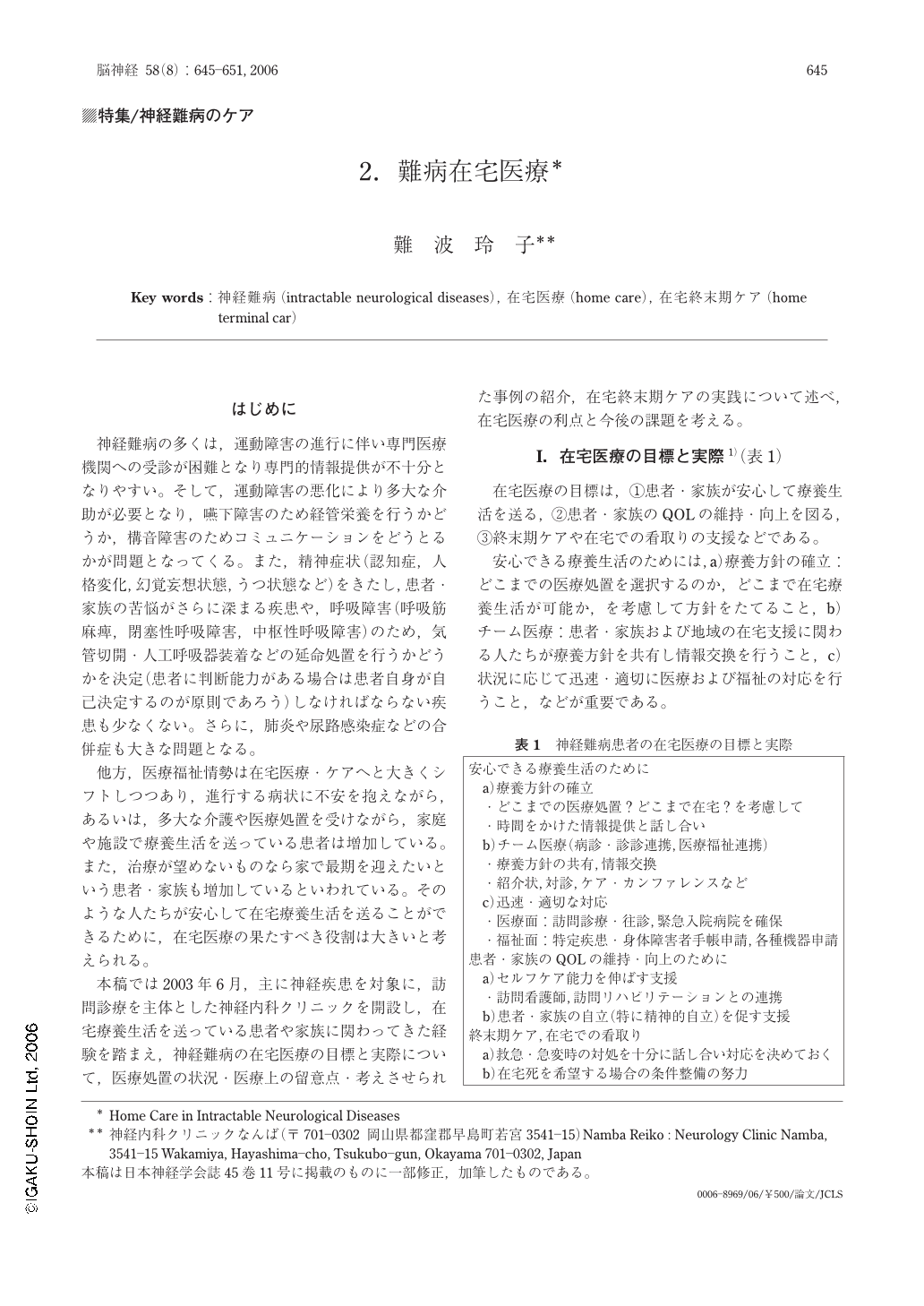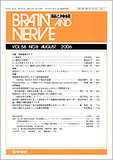Japanese
English
- 有料閲覧
- Abstract 文献概要
- 1ページ目 Look Inside
- 参考文献 Reference
はじめに
神経難病の多くは,運動障害の進行に伴い専門医療機関への受診が困難となり専門的情報提供が不十分となりやすい。そして,運動障害の悪化により多大な介助が必要となり,嚥下障害のため経管栄養を行うかどうか,構音障害のためコミュニケーションをどうとるかが問題となってくる。また,精神症状(認知症,人格変化,幻覚妄想状態,うつ状態など)をきたし,患者・家族の苦悩がさらに深まる疾患や,呼吸障害(呼吸筋麻痺,閉塞性呼吸障害,中枢性呼吸障害)のため,気管切開・人工呼吸器装着などの延命処置を行うかどうかを決定(患者に判断能力がある場合は患者自身が自己決定するのが原則であろう)しなければならない疾患も少なくない。さらに,肺炎や尿路感染症などの合併症も大きな問題となる。
他方,医療福祉情勢は在宅医療・ケアへと大きくシフトしつつあり,進行する病状に不安を抱えながら,あるいは,多大な介護や医療処置を受けながら,家庭や施設で療養生活を送っている患者は増加している。また,治療が望めないものなら家で最期を迎えたいという患者・家族も増加しているといわれている。そのような人たちが安心して在宅療養生活を送ることができるために,在宅医療の果たすべき役割は大きいと考えられる。
本稿では2003年6月,主に神経疾患を対象に,訪問診療を主体とした神経内科クリニックを開設し,在宅療養生活を送っている患者や家族に関わってきた経験を踏まえ,神経難病の在宅医療の目標と実際について,医療処置の状況・医療上の留意点・考えさせられた事例の紹介,在宅終末期ケアの実践について述べ,在宅医療の利点と今後の課題を考える。
Taking into account how to care patients at home with intractable neurological disease and their family, I have introduced the achievement of the medical caring technique by an aged family member, the risks of the PEG and acute respiratory failures under BiPAP, the problems in home rehabilitation, and the experiences of home terminal care, from the view point of a practicing physician. Home caring pursues to support patients and their family to live peacefully with disease with highest quality of life. Hospice caring is also an important issue. From now on, I would like to try to give even better home care by early recognition of problems and by cooperating with hospitals, clinics and other field workers.

Copyright © 2006, Igaku-Shoin Ltd. All rights reserved.


